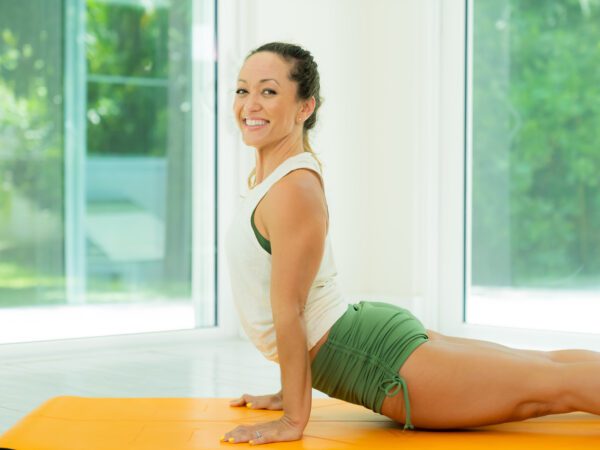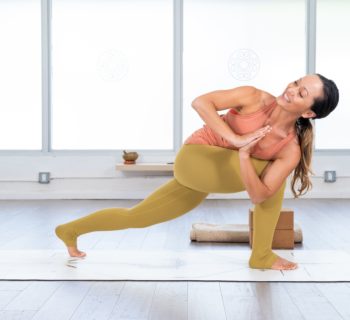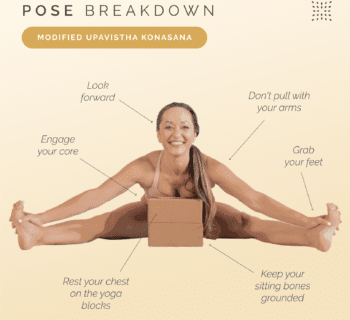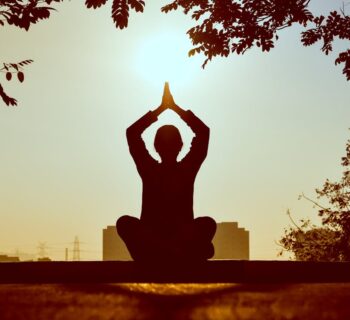Are you looking for a dynamic and invigorating yoga practice that seamlessly blends movement and breath? Look no further than vinyasa yoga. This popular style of yoga is characterized by its fluid transitions and creative sequences, offering a unique and engaging way to connect with your body and mind. In this blog post, we’ll dive into the essentials of vinyasa yoga, explore its numerous benefits, and provide tips for both beginners and seasoned practitioners. Whether you’re new to yoga or looking to deepen your practice, vinyasa yoga has something to offer everyone. So, roll out your mat, take a deep breath, and let’s embark on this transformative journey together.
Origin of Vinyasa Yoga
Vinyasa yoga has its roots in the ancient traditions of India, emerging from the foundational practices of Hatha yoga.
Historically, it was shaped significantly by the teachings of Tirumalai Krishnamacharya in the early 20th century. Krishnamacharya, often regarded as the father of modern yoga, introduced the concept of Vinyasa Krama, a method emphasizing the transition between postures with synchronized breath.
This method was not only revolutionary but also deeply grounded in the yogic philosophy that every movement can lead to a meditative state. His disciples, such as Pattabhi Jois and B.K.S. Iyengar, further popularized these sequences globally, each offering their interpretations and styles.
Today, vinyasa yoga is an integral part of many yoga traditions, continuously evolving while maintaining its core emphasis on breath and movement. It caters to practitioners seeking both the physical rigor and the meditative calm that comes from a synchronized practice.
Evolution Over Time
As vinyasa yoga gained traction, teachers across continents began creating variations that catered to diverse needs.
Over the decades, its flexible framework adaptably catered to a global audience, evolving into forms that emphasize strength, fluidity, and mindfulness. Renowned contemporary instructors like Shiva Rea and Seane Corn have advanced vinyasa’s techniques, producing a significant impact on modern yoga.
This evolution has transformed vinyasa into an accessible yet profound practice. Its adaptability ensures that everyone, from beginners to advanced practitioners, can find sequences that suit their individual journey and goals.
Vinyasa’s encompassing progression has encouraged fusion with other disciplines, such as Pilates and dance, fostering innovation and continued relevance. This expansive growth illustrates a powerful dedication to holistic well-being, blending traditional roots with contemporary wellness practices.
Key Figures in Vinyasa Yoga
Pioneers shaped the modern practice of vinyasa yoga.
Sri Krishnamacharya is often credited with the roots of vinyasa. His teachings influenced many notable students, including K. Pattabhi Jois and B.K.S. Iyengar, who further developed their own approaches. Krishnamacharya’s legacy can be seen in the dynamic flow and disciplined breathing of vinyasa yoga.
He taught the interplay of breath and movement.
Jois played a crucial role in popularizing the Ashtanga system. This foundational structure of vinyasa has shaped many modern schools of yoga, emphasizing synchronized breath and movement.
Another significant contributor is T.K.V. Desikachar, Krishnamacharya’s son. His individualized approach to Vinyasa reflects a profound understanding of adaptability in practice. Together, these figures have blended tradition with innovation, creating a versatile and deeply transformative practice that continues to inspire yoga enthusiasts globally.
Understanding Vinyasa Flow
Vinyasa flow is an energetic and fluid practice that emphasizes the harmony of breath and movement.
In vinyasa yoga, each movement is synchronized with an inhalation or an exhalation, creating a seamless transition between poses. This contrast can be integral to the experience.
Vinyasa flow’s dynamic nature caters to both beginners and advanced practitioners, making it accessible yet challenging through mindful movement. This adaptability fosters growth and confidence.
The practice not only improves physical flexibility and strength but also enhances mental clarity and emotional stability. Vinyasa synchronizes body, mind, and spirit.
Understanding vinyasa flow unearths a rich, transformative practice aimed at holistic well-being for all, integrating practices like meditation to deepen the experience.
Benefits of Vinyasa Yoga
Practicing vinyasa has many physical, mental, and emotional benefits. Physically, it fosters increased strength, flexibility, and endurance. Mentally, practitioners often experience heightened focus, calmness, and a profound sense of clarity. Emotionally, the rhythmic flow and breath synchronization can cultivate inner peace, reduce stress, and promote a deep connection to oneself. Through regular practice, individuals may discover a renewed energy and an enduring sense of well-being that enriches their daily lives, making Vinyasa yoga a truly transformative journey for all who embrace it.
Physical Benefits
Practicing vinyasa yoga yields numerous physical benefits, including increased strength, improved flexibility, and enhanced muscular endurance. These advantages contribute to a more resilient, well-balanced body.
When individuals integrate vinyasa into their routines, they experience noticeable improvements in cardiovascular health, stamina, and overall physical vitality. This practice supports a dynamic and agile physique.
Regular vinyasa practice boosts metabolism, aiding in weight management and overall physical fitness.
Vinyasa yoga cultivates a harmonious synergy of movement and breathwork, which elevates physical coordination. By committing to consistent practice, one can achieve greater bodily awareness and an unparalleled sense of ease in daily physical activities.
Mental Benefits
Vinyasa yoga significantly enhances concentration, mental clarity, and a profound sense of inner peace. Practitioners often report a marked reduction in everyday stress.
This reduction in stress manifests as a calmer, more focused mind.
Moreover, vinyasa sessions foster mindfulness, encouraging present-moment awareness.
Engaging in this practice helps individuals cultivate a positive outlook, enhancing their emotional resilience.
Regular vinyasa can be transformative for mental well-being, providing tools for better mental health and promoting self-awareness that enriches one’s overall life experience.
Ultimately, the flow of vinyasa not only strengthens the body but also nurtures the mind, creating a balanced and harmonious existence.
Emotional Benefits
Vinyasa yoga provides profound emotional support, helping practitioners navigate life’s challenges with greater equanimity and composure.
Through the fluid sequences of movement and breath, individuals can release pent-up emotions and stress, fostering a deeper connection to their emotions. This liberation of emotional blockages creates space for tranquility and emotional clarity, allowing for the natural ebb and flow of feelings to be understood and processed more effectively.
Regular vinyasa practice promotes emotional resilience, equipping participants with the fortitude to face life’s adversities with grace. As sessions encourage introspection, practitioners often discover a newfound inner calm and emotional balance, enhancing their capability to respond to stressors with a composed demeanor.
In essence, vinyasa yoga not only nurtures the body and mind but also bolsters emotional health, offering practitioners a holistic approach to achieving a balanced, fulfilling life. The benefits extend beyond the mat—imbuing one’s daily interactions and emotional wellbeing with a sense of peace, confidence, and empowered self-assurance.
Who Can Practice Vinyasa Yoga?
Vinyasa yoga is accessible to everyone.
While some might associate yoga with flexibility, vinyasa yoga offers something for everybody. The flow-based practice caters to various fitness levels, making it an inclusive wellness activity. Experienced yogis may find their edge through challenging sequences, while beginners can opt for gentler transitions to build their practice slowly and mindfully.
It transcends age and fitness levels.
Regardless of physical condition, the adaptable nature of vinyasa allows individuals to modify poses to suit their bodies. This adaptability ensures that participants can engage fully, reaping the benefits of increased strength, flexibility, and mindfulness at their own pace.
What’s more, practicing Vinyasa yoga is not confined to a particular setting or schedule. From attending studio classes with certified instructors to exploring online sessions at home, practitioners have the liberty to integrate this transformative practice conveniently into their lifestyles.
People from all walks of life can find solace, strength, and revitalization through this dynamic and unifying practice. Embracing vinyasa yoga promises not only physical benefits but also a harmonious blend of emotional and mental tranquility, making it a universal beacon of wellness.
How to Start a Vinyasa Practice
Embarking on a Vinyasa yoga journey begins with selecting a suitable environment—whether joining a local studio, streaming online classes on Omstars, or practicing in a serene, self-created space. Beginners should prioritize finding a reputable instructor who can offer guidance, adjustments, and motivation tailored to individual needs.
Equipping oneself with essential gear such as a quality yoga mat, comfortable attire, and optional props like blocks enhances the practice’s efficiency and enjoyment.
Finding the Right Class
Selecting the right vinyasa yoga class is a crucial first step in one’s yoga journey. It ensures that the practitioner enjoys, learns, and grows at a comfortable pace.
Consider the level of experience one has. If they are new to vinyasa, a beginner’s class will lay a strong foundation.
Checking for certified instructors with a passion for teaching can make a significant difference. Their expertise, enthusiasm, and ability to connect with students are paramount for a fulfilling experience.
Exploring various class formats—whether in-person, online, or through pre-recorded sessions—allows for flexibility according to one’s schedule and learning preference. Ensuring that the class environment fosters positivity, inclusivity, and aligns with one’s overall fitness goals is integral to a rewarding practice. Seek recommendations, read reviews, and do trial sessions to find the perfect match.
Essential Gear and Clothing
Having the right gear and clothing enhances the efficiency and enjoyment of vinyasa yoga practice.
- Yoga Mat: Provides cushioning and a non-slip surface.
- Comfortable Clothing: Allows full range of motion.
- Yoga Blocks: Assists in maintaining proper alignment.
- Straps: Helps extend reach and achieve postures.
- Mat Towel: Keeps mat dry during intense sessions.
- Reusable Water Bottle: Keeps hydration within reach.
- Yoga Bag: Conveniently stores and transports gear.
Choosing quality gear ensures durability and maximum comfort.
Tailoring clothing and accessories to one’s specific needs can significantly boost focus and performance.
Ready gear translates to a well-prepared and enjoyable Vinyasa yoga journey.
Basic Vinyasa Poses for Beginners
Starting with basic Vinyasa poses allows beginners to build a solid foundation, promoting a practice infused with balance, strength, and mindful progression. These poses are accessible yet challenging, helping new practitioners to develop essential skills gradually.
The cornerstone of any vinyasa sequence is the sun salutation.
Incorporating downward dog not only stretches but also strengthens one’s body.
Warrior I is vital for enhancing stability and leg strength.
Mountain pose helps cultivate awareness and fosters a grounded stance.
Child’s pose offers a moment of rest and introspection, emphasizing gentle stretching.
Together, these poses are designed to create a seamless flow. Practicing these will enrich one’s journey, laying a solid groundwork for more advanced postures and deepening the overall Vinyasa experience.
Now that you know a bit about vinyasa yoga, here is a short class you can try.
Image by Pete Linforth from Pixabay









